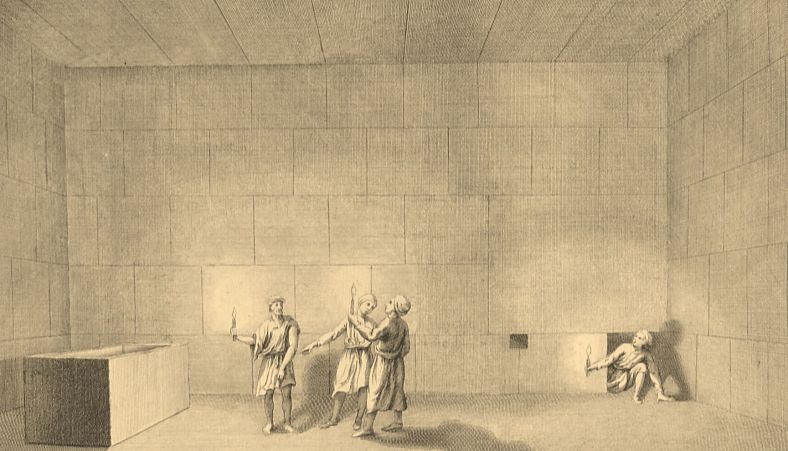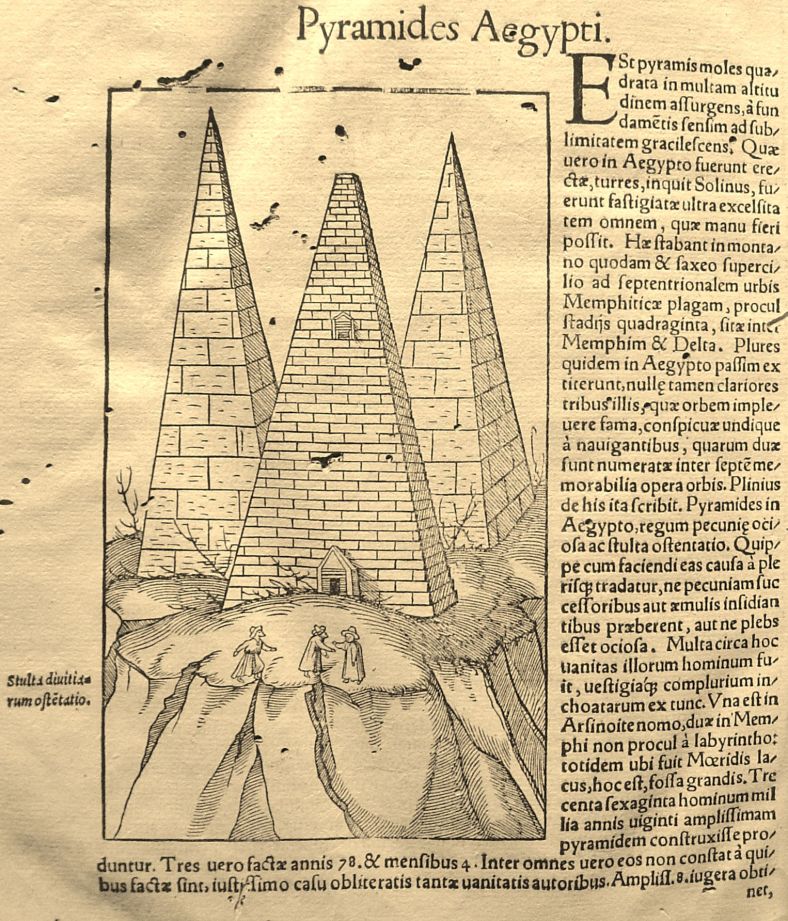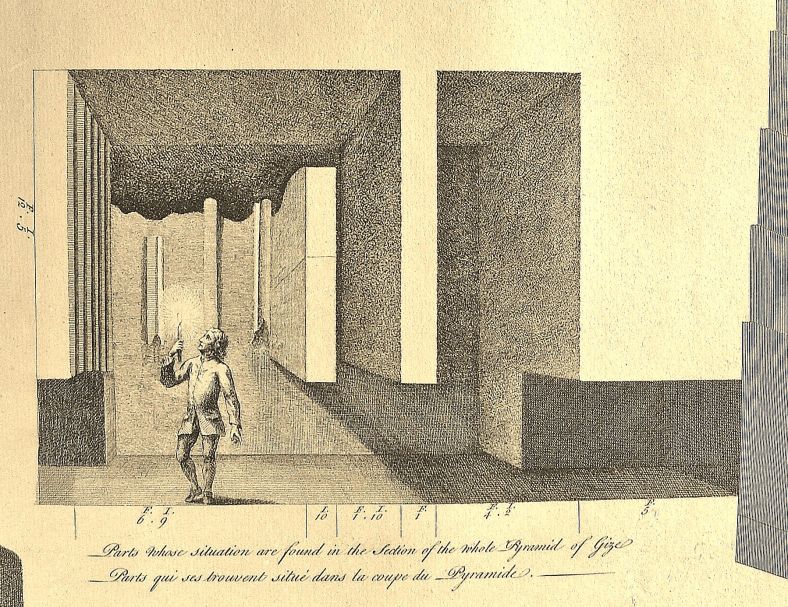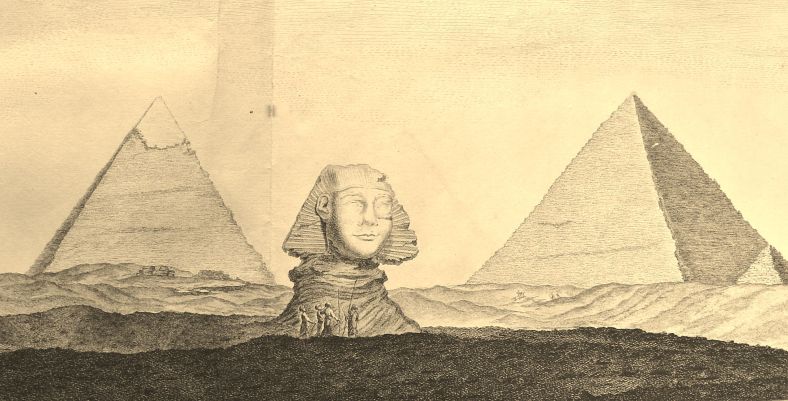We often think of Western obsession with the ancient civilizations of the Nile as having two peaks. Firstly, there was the massive interest sparked by discovery of the Rosetta Stone by the French in 1799, the tri-lingual inscription on which lead to the first modern decryption of hieroglyphics. More recently, the discovery of the tomb of Tutankhamun by Howard Carter in 1922 resulted in the widespread diffusion of Egyptian themes and forms through the then new medium of film and the Art Deco movement. Yet a browse through Worcester’s collection of books dealing with Ancient Egypt suggests that to think in terms of these twin peaks of interest is quite wrong. The artefacts and remains of Egyptian civilization have always been of fascination to people – from ancient times and continuing into the present day.

People in the past, as today, have always enjoyed snooping around, as this illustration of c.1750 shows. Image copyright the Dean and Chapter of Worcester Cathedral (UK).
As an example of this, we will look at how people over the years have investigated, written about and drawn one of the most iconic of Egypt’s landmarks: The Great Pyramid of Giza. It was built around c. 2550 BC. When Herodotus – the Greek writer widely regarded as the father of history – visited in the 5th Century BC, the pyramids had long since been looted and opened up for tours to the curious.[1] The Romans were no less fascinated than the Greeks.[2] These Classical texts were well known throughout medieval and early modern Europe – and it would seem that some of the earlier geographers from these periods would rely more on these accounts than with going to see things for themselves.

Illustration of the pyramids as appeared in our 1554 edition of Sebastian Munster’s Cosmographia. Image copyright the Dean and Chapter of Worcester Cathedral (UK)
By the 17th Century, however, when travel became easier, serious scientific studies of Egyptian remains began to be made. John Greaves was one of the first to publish the results of surveys made using modern measurements, and published his Pyramidiographia in 1646. We have one book in the library here, which contains both accurate measurements of and vivid illustrations of monuments. Dating from the 1750s, it is real evidence that European fascination with Egyptian culture began long before the discovery of the Rosetta Stone.

Accurate measurements, here in an illustration of c. 1750. Image copyright the Dean and Chapter of Worcester Cathedral (UK)
We in fact have too much content on Ancient Egypt here to discuss in one post, so don’t expect this to be my last one dealing with this subject!
Tom Hopkins

The Pyramids and the Sphinx of Giza – one of the most iconic views of Egypt. Image c. 1750. Image copyright the Dean and Chapter of Worcester Cathedral (UK)
Bibliography
Edwards, I.E.S., The Pyramids of Egypt, London 1962
[1] Edwards 1962: 99-91
[2] Horace famously uses pyramids as a metaphor for longevity in Ode 3.30.

I think that some of the peaks and troughs in the European study of Ancient Egypt are to do with the unsettled nature of the country. Even the Rosetta stone was found during the French military occupation. Before that the country had endured Mamluk rule which was chaotic and dangerous for travelers. Even the intrepid James Bruce was put off by some troglodytes at Thebes! Ironically many who did write about Egypt only did so because they became almost stuck in the country while attempting to travel to the Sudan. For instance, Jean Louis Burckhardt and WG Browne.
Being from a Coptic background I wait with interest for more of your posts on Ancient Egypt.
LikeLike
Hi – I think you raise a really interesting point. If I ever have the time, would be great to do a project tracking European publications on Egypt with the political situation in the country at the time! There’s a fair amount of material on Ancient History here – daresay I’ll dig up (not literally!) some more Egyptian material soon 🙂 Tom
LikeLike